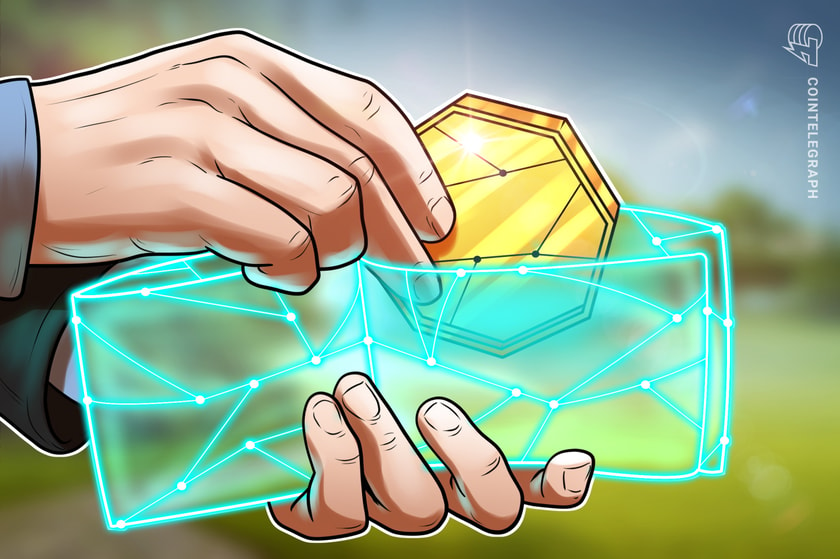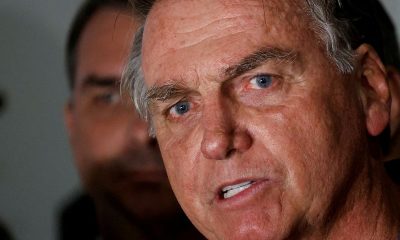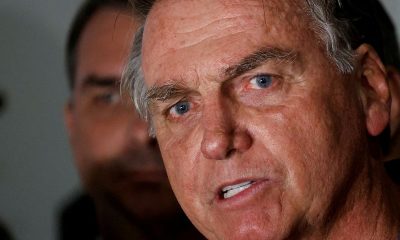Cryptocurrency
Web3’s revolution: Why the digital wallet is the new marketing gold

The marketing landscape has shifted in the past few years and is ready for upheaval in the coming few years. Stringent regulations, the retirement of third-party cookies, privacy-conscious Gen Z, etc., will increase customer acquisition costs (CAC). The average CMO will likely shift dollars to pay a premium for higher-quality, zero-party data and to drive higher consumer engagement.
Amid this evolution, Web3 emerges as a beacon of possibility for the cookie-less internet. The killer application will be the user-owned digital wallet which can reconfigure consumer-brand relationships with an emphasis on privacy.
Key drivers
Rising customer acquisition cost (CAC)
The digital marketplace is more saturated than ever, with countless brands vying for user attention. This has led to an exponential rise in Customer Acquisition Costs (CAC). Companies find it more challenging and expensive to capture and keep user attention using traditional methods. With this ballooning CAC, brands are searching for more efficient, direct and personalized means of connecting with users. An NFT-enabled wallet with unique identifiers is emerging as a new channel of establishing trust in a consumer-owned internet.
Retiring third-party cookies
Google’s announcement of phasing out third-party cookies by 2024 sent shockwaves throughout the digital advertising ecosystem. As one of the dominant players in data arbitrage, this move underscored a seismic shift away from the old guard of browser-based data tracking and towards a more privacy-centric browsing experience. The shift could make it harder for marketers to target, engage and know their consumers.
Privacy-aware demographics
There’s an increasing public consciousness about online privacy with the emergence of new demographic segments and Gen Z’s focus on digital sovereignty. These users demand transparency about how their data is used and are wary of traditional tracking mechanisms, further pushing brands to rethink their engagement strategies.
Upcoming regulations
Global regulators are catching up with the evolving digital domain. From the European Union’s General Data Protection Regulation (GDPR) to the California Consumer Privacy Act (CCPA) in the U.S., governments are imposing stringent rules on data collection, usage and sharing. Such regulatory landscapes require innovative solutions that respect user privacy while ensuring seamless brand engagement.
The digital wallet: Web3’s answer to the cookie-less internet
Faced with these challenges, the digital wallet emerges as Web3’s pioneering solution. So, why is the wallet likely poised to become the new cookie?
Direct connection between users and brands
Using digital wallets, brands can establish a direct, 1:1 relationship with users. Instead of relying on intermediaries and third-party trackers, brands can interact with users in a hyper-personal and meaningful manner. Wallets foster user ownership and trust to enable custom experiences based on genuine user preferences.
Inherent privacy
Digital wallets, at their core, are built on the principles of decentralization and privacy. Unlike cookies that track user activity across the web, wallets give users full control over their data. Brands can only access information if the user permits (opt-in), creating a transparent and consensual relationship, boosting loyalty and combined loan-to-value ratio (CLTV) in a mutual value exchange.
Multi-dimensional utility
Unlike cookies, which serve a primary tracking purpose, wallets are multi-dimensional. Beyond helping with transactions, they can store a variety of digital assets such as offers, experiences, access, NFTs (non-fungible tokens), etc. For brands, this offers a plethora of opportunities to create unique value propositions and experiences. Imagine loyalty programs based on tokenized rewards or exclusive access to digital art for brand enthusiasts.
Long-term engagement
With cookies, user engagement was often transient and fragmented. Digital wallets can foster long-term relationships. By connecting with a user’s wallet, brands can maintain an enduring connection, offering services, products, or experiences over an extended period with better retention rates, and less churn resulting in higher CLTV.
The future of brand engagement
Web3’s promise of a decentralized, user-centric digital ecosystem is slowly coming to fruition. As third-party cookies fade into obsolescence, the digital wallet emerges as a resilient, adaptable and innovative channel for brand engagement in this new era.
Brands willing to embrace this transformation stand to gain a competitive advantage. By focusing on genuine, transparent and long-term relationships facilitated by wallets, they can reduce CAC, enhance loyalty and boost CLTV.
However, brands must embrace open wallets and not create their own silos or custodial wallets. Siloed wallets will merely mean using new technology to drive their old methods of data hoarding and this could diminish user trust.
Open and non-custodial wallets provide chief marketing officers with the unique opportunity to craft brand narratives around privacy and direct engagement, resonating with today’s consumers. Leveraging digital wallets allows for personalized brand experiences and data-driven strategies, offering innovative avenues for engagement across brands and potentially driving more revenue.
Concluding thoughts
The cookie-less internet presents an opportunity, not a risk. It has the ability to redefine and strengthen the connection and trust between consumers and brands. A user-owned digital wallet can become the upgraded and sophisticated replacement for obsolete cookies from the prior incarnation of the internet.
Nitin Kumar is a growth CEO and co-founder at zblocks. He is a recognized leader, author, former consulting partner and VC investor.
This article was published through Cointelegraph Innovation Circle, a vetted organization of senior executives and experts in the blockchain technology industry who are building the future through the power of connections, collaboration and thought leadership. Opinions expressed do not necessarily reflect those of Cointelegraph.
Cryptocurrency
Ethereum Foundation, Whales, and Hackers: What’s Driving the ETH Sell-Off?

TL;DR
- Whales, hackers, and the Ethereum Foundation wallets moved over $500M in ETH through large sales and withdrawals.
- Ethereum transfers rose to 4.6M ETH, nearing the monthly high of 5.2M recorded in July.
- Staking inflows hit 247,900 ETH, the highest in a month, locking more supply from trading.
Large Withdrawals and Whale Activity
Ethereum (ETH) has seen heavy movement from major wallets over the past few days. On-chain data from Lookonchain shows a newly created wallet pulled 17,591 ETH, worth $81.62 million, from Kraken in just two hours.
Over three days, two new wallets withdrew a combined 71,025 ETH, valued at $330 million, from the exchange.
One of these wallets, address 0x2A92, has withdrawn 53,434 ETH, worth $242.34 million, in two days. This includes a recent purchase of 30,069 ETH, valued at $138.46 million, during a market drop.
Major ETH Holders Offload Millions Amid Price Rally
In contrast, several separate entities have been disposing of some ETH holdings. A wallet tied to a hacker address 0x17E0 sold 4,958 ETH for $22.13 million at $4,463, securing a profit of $9.75 million. Earlier this year, the same address sold 12,282 ETH at $1,932 and later bought back part of the amount at higher prices.
A different whale sold 20,600 ETH for $96.55 million over the past two days, generating a profit of more than $26 million after holding the position for nine months.
Meanwhile, an Ethereum Foundation-linked wallet, 0xF39d, sold 6,194 ETH worth $28.36 million in the last three days at an average price of $4,578.
Recent sales from the same wallet included an additional 1,100 ETH and 1,695 ETH for over $12.7 million combined.
The #EthereumFoundation-linked wallet(0xF39d) sold another 1,300 $ETH($5.87M) at $4,518 ~11 hours ago.
Over the past 3 days, this wallet has sold a total of 6,194 $ETH($28.36M) at an average price of $4,578.https://t.co/4hfCWymHVG pic.twitter.com/ErUyEY8SJy
— Lookonchain (@lookonchain) August 15, 2025
Network Activity on the Rise
CryptoQuant data shows Ethereum’s total tokens transferred have been climbing since August 9. After ranging between 1 million and 3 million ETH through late July and early August, transfers have risen to 4.6 million ETH, approaching the monthly high of 5.2 million recorded in mid-July. This increase has occurred alongside a price rally from about $3,400 to $4,600.
Interestingly, staking inflows generally stayed between 20,000 and 80,000 ETH per day over the past month. On August 14, inflows jumped to 247,900 ETH, the highest in the period.
At the time, ETH was trading near $4,600. Large staking deposits reduce the amount of ETH available for immediate trading, as staked coins are locked for a set period.
In the meantime, ETH trades at $4,647 with a 24-hour volume of $68.25 billion, down 2% on the day but up 19% over the week.
Binance Free $600 (CryptoPotato Exclusive): Use this link to register a new account and receive $600 exclusive welcome offer on Binance (full details).
LIMITED OFFER for CryptoPotato readers at Bybit: Use this link to register and open a $500 FREE position on any coin!
Cryptocurrency
Massive DOGE Whale Activity Hints at $1 Breakout

TL;DR
- Whales bought two billion DOGE this week, lifting their combined holdings to 27.6 billion coins.
- A single 900M DOGE transfer worth $208M to Binance drew attention to large exchange movements.
- DOGE broke key resistance, with momentum building for a possible push toward the $1 price mark.
Price and Market Moves
Dogecoin (DOGE) traded at $0.23 at press time, slipping 4% over the past day but still showing a 2% gain for the week. Daily turnover came in at about $6.18 billion.
Meanwhile, the broader crypto market saw over $1 billion in liquidations. Hotter-than-expected US Producer Price Index data pushed traders to scale back expectations of a near-term Federal Reserve rate cut. DOGE had roughly 290,500 coins liquidated during the sell-off.
On the two-week chart, analyst Trader Tardigrade notes that DOGE has cleared a downward-sloping resistance line after completing what appears to be a “wave V” in an Elliott Wave sequence. Similar setups in the past, where prolonged declines stayed within falling channels before breaking higher, have been followed by sharp rallies.
$Doge/2-week#Dogecoin is gaining strong momentum to surge above $1 pic.twitter.com/TuSEKr19nv
— Trader Tardigrade (@TATrader_Alan) August 15, 2025
Momentum gauges are also turning up. The Stochastic RSI, which had dropped into oversold territory, is now heading higher. Previous reversals from this zone have coincided with sustained upward moves. The current formation points to a possible run that could carry DOGE past the $1 mark.
Heavy Whale Buying and Large Transfers
As reported by CryptoPotato, blockchain data shows large investors have added two billion DOGE in the past week, spending just under $500 million. That brings their holdings to about 27.6 billion coins, or 18% of the supply. The buying streak has prompted speculation within the community.
Recently, Whale Alert flagged a 900 million DOGE transfer worth about $208 million into Binance. The tracking indicates that it originated from a wallet connected to the exchange, likely as an internal activity. The address involved holds 2.88 billion DOGE, one of the largest balances on the network.
Ali Martinez also reports that transactions above $1 million reached a one-month high, with activity building since early August and peaking as DOGE traded at $0.25.
Whales are back! Dogecoin $DOGE activity at a 1-month high. pic.twitter.com/C83Pv68mCt
— Ali (@ali_charts) August 14, 2025
Sentiment Building
Analyst Gordon described the current setup as “a nice bit of consolidation” before a potential breakout, adding,
“This will be one of the first coins normies FLOCK to & the pump will be MASSIVE.”
With whale accumulation rising, high-value transfers increasing, and a bullish technical pattern in play, DOGE is positioned for a potential push toward $1 if momentum holds.
Binance Free $600 (CryptoPotato Exclusive): Use this link to register a new account and receive $600 exclusive welcome offer on Binance (full details).
LIMITED OFFER for CryptoPotato readers at Bybit: Use this link to register and open a $500 FREE position on any coin!
Cryptocurrency
Ripple Price Analysis: XRP at Risk as Key Support Levels Could Trigger Sharp Drop

XRP has recently entered a consolidation phase after a strong rally earlier this summer, with the price action now hovering around key resistance levels on both its USDT and BTC pairs. Yet, while momentum has slowed, the charts still indicate a generally bullish structure, with multiple key support levels remaining firmly in place.
Technical Analysis
By ShayanMarkets
The USDT Pair
On the XRP/USDT daily chart, the price is currently trading near the $3.10 mark, facing a strong resistance zone around $3.40. This follows a breakout above the $2.70 range in July, which has now flipped into a support area.
Both the 100-day and 200-day moving averages are also trending upward and recently formed a bullish crossover around $2.45, reinforcing the medium-term bullish sentiment. If the $3.40 resistance breaks, a push toward the critical $4.00 range becomes likely.
However, the RSI hovering near the neutral 50 level suggests a lack of strong momentum for now, meaning a short-term pullback into the $2.80 support zone is still possible.
This zone will be key for maintaining the bullish structure. Losing it could open the door for a deeper correction toward the 200-day moving average located around the $2.40 mark. Yet, as long as the price stays above the moving averages, the broader trend remains bullish.
The BTC Pair
Looking at the XRP/BTC chart, the pair has recently pulled back after hitting the 3,000 SAT resistance, with the price currently around 2,600 SAT.
This follows a clean breakout above the long-term descending channel and a successful retest of its upper boundary, which coincided with the 200-day moving average and the 2,400 SAT support zone. This confluence remains a key bullish technical factor, as holding above it could attract renewed buying pressure.
That said, RSI levels around 48 show that momentum has cooled after the sharp July rally, meaning XRP may continue ranging between 2,400 SAT and 3,000 SAT in the near term. A decisive close above 3,000 SAT would likely open the path to the 3,400 SAT zone, while losing 2,400 SAT could shift the bias back toward 2,000 SAT support. For now, the structure still favors the bulls as long as higher lows remain intact.
Binance Free $600 (CryptoPotato Exclusive): Use this link to register a new account and receive $600 exclusive welcome offer on Binance (full details).
LIMITED OFFER for CryptoPotato readers at Bybit: Use this link to register and open a $500 FREE position on any coin!
Disclaimer: Information found on CryptoPotato is those of writers quoted. It does not represent the opinions of CryptoPotato on whether to buy, sell, or hold any investments. You are advised to conduct your own research before making any investment decisions. Use provided information at your own risk. See Disclaimer for more information.
Cryptocurrency charts by TradingView.

 Forex3 years ago
Forex3 years agoForex Today: the dollar is gaining strength amid gloomy sentiment at the start of the Fed’s week

 Forex3 years ago
Forex3 years agoUnbiased review of Pocket Option broker

 Forex3 years ago
Forex3 years agoDollar to pound sterling exchange rate today: Pound plummeted to its lowest since 1985

 Forex3 years ago
Forex3 years agoHow is the Australian dollar doing today?

 Cryptocurrency3 years ago
Cryptocurrency3 years agoWhat happened in the crypto market – current events today

 World3 years ago
World3 years agoWhy are modern video games an art form?

 Commodities3 years ago
Commodities3 years agoCopper continues to fall in price on expectations of lower demand in China

 Economy3 years ago
Economy3 years agoCrude oil tankers double in price due to EU anti-Russian sanctions

























